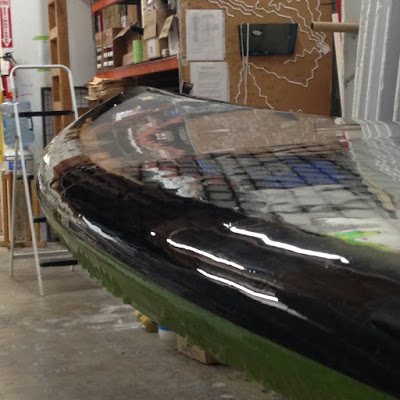 Oct
01
Oct
01
Throwback D.I.Y. Lessons
- October 1, 2016
- 0 Comment(s)
While recently perusing the backlog of Foam E-Z content, I came across tons of rad old content. Some of it went on to be posted in blogs and newsletters, others never made it past the draft stage. What seemed to be true of all of it though was that for all of the dramatic changes and differences that happen in this industry (typically occurring over the course of only a few years) there is much that stays the same. Case and point, this surfboard glassing guide that was discovered from an unreleased 2008 newsletter. The information found within this guide remains as accurate and useful today as it was nearly ten years ago when it was compiled, and even longer before that. No matter what materials you’re working with (for the most part) you should find this guide to be an indispensable reference source, whether you are glassing your first board, or you’ve completely lost track of what number you’re on. It’s a great and thorough guide on the surfboard glassing process, and a healthy reminder of how thoughtful planning and attention to detail will ensure a beautifully finished board. Enjoy.
The Keys to a Solid Lam Job by Thomas Go’offe
You might not know this but the Laminating Coat could quite possibly be the most important strength component to your glass job. This is where it all begins! There are five key components:
There are million ways to skin a cat here but what is most important is to be sure the cloth combination is appropriate for the board you are building. The most common combo for a high performance short board is single four (4oz) bottom with a double four (4oz) deck. Stock long boards are traditionally glassed with single six (6oz) bottom with a double six (6oz) deck.
Most people overlook this step as being an important one but it truly is. If you cut your cloth with a smooth line you can alleviate many pitfalls down the road. A smooth cut helps minimize the fibers from coming unraveled therefore helping to keep the overlap smooth.
The key here is to use enough resin to saturate the cloth entirely but not waste a bunch on the floor. The resin should be poured on the flats of the board and worked in with a squeegee angle of about forty-five degrees. This relatively flat angle gives you the ability to move the resin around and push it through the cloth. As you move it around the resin will drip off the rails, at this time you should drizzle the last of your resin above the rail line and use your squeegee as a backer to the hanging cloth. This will help to “wet out” the rails.
Now the task is to pull the excess out and insure that the cloth does not float above the foam. After your board is saturated in resin you will need to steepen the angle of the squeegee to approximately seventy-five degrees and methodically pull the resin back out. The idea here is to move the resin out from under the cloth in an attempt to adhere the cloth directly to your shaped blank. For high performance boards (light) you can really pull hard till you hear the cloth scream but be careful not to leave it too dry. Most other board styles don’t require such an extreme extraction of resin. Once you’ve adhered the cloth to the flats of the board you will need to “wrap the rails”. By this time the hanging cloth should drain a bit. Start from the middle and work your way out. Pull the cloth from the top of the rail under the board fairly tight and push your resin towards the stringer area.
This step takes some time to master but is an invaluable step to creating a flat and highly bonded lam. First cut any hanging strands of cloth off with a sharp razor blade. Using white 80 grit sandpaper you will need to carefully sand the edge where the cloth meets the foam on the deck. The can be extremely touchy if you have an air spray in this area. Go slow and try very hard to sand only on the resin/cloth and not on the bare foam. If you have done a great job on step 4 “wrapping the rails” your task here will be minimal.
As you can see this is not rocket science but it does take some good instruction and gets better with experience. Each step is critically based on the next. Following these tips and using these professional secrets will help you in your first step to glassing your board. Spend time getting your lamination right and it will pay off in the long run with a strong and resilient surfboard.

